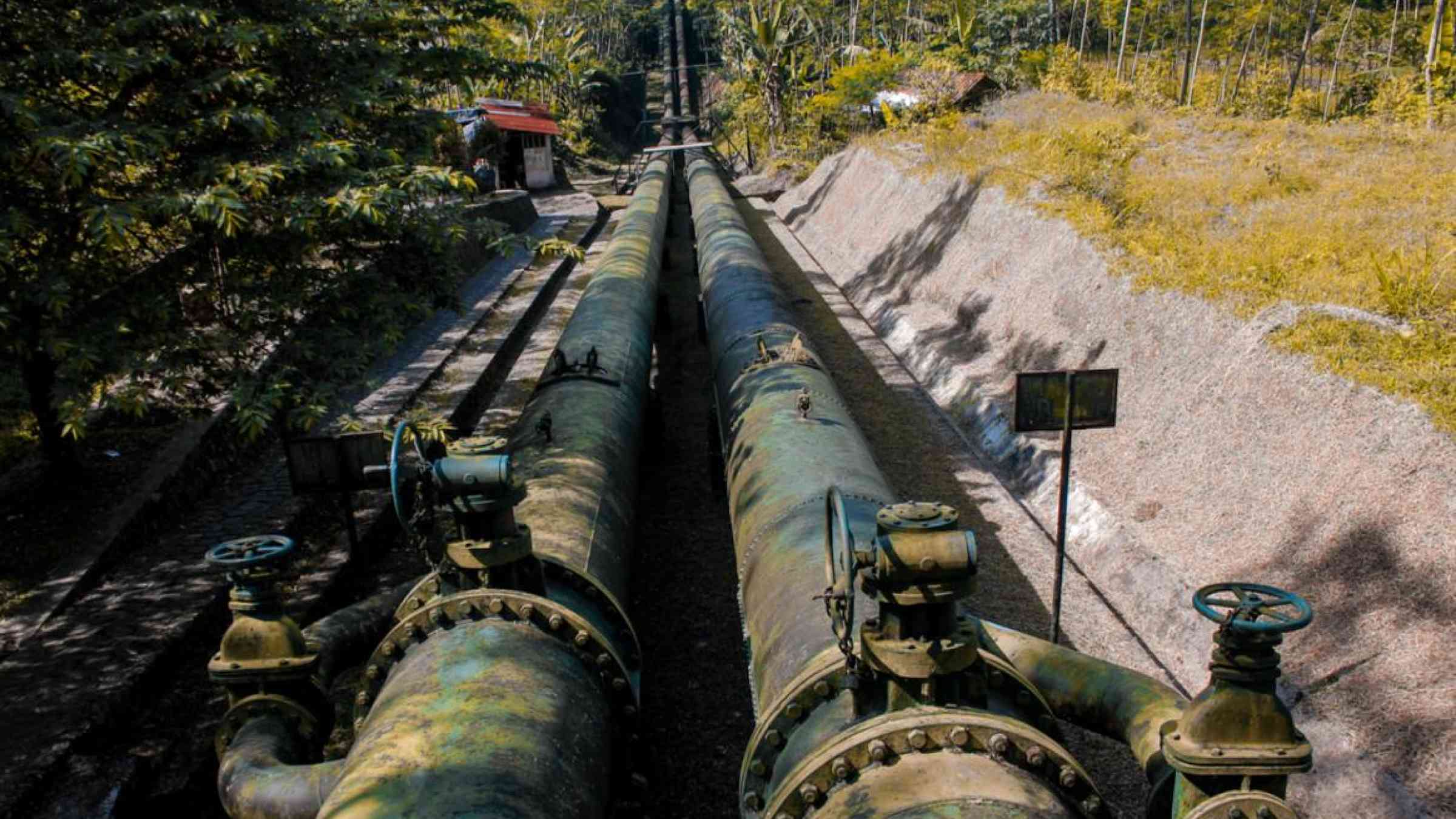What do we need to boost water supply resilience in Indonesia? A risk-based mindset

By Irma Magdalena Setiono, Jian Vun, Muhammad Halik Rizki, and Devan Kreisberg
Nestled in a narrow valley in the center of Java Island, Magelang City is surrounded by rivers and steep mountain slopes. Its location makes it highly exposed to natural hazards, particularly floods, earthquakes, and landslides. When a 2008 landslide damaged the city’s water supply system, its cracked pipes leaked 70 liters of water per second for 10 consecutive hours – enough water to meet the daily needs of 10,000 households.
Indonesia’s nearly 400 local water utilities (PDAMs) have struggled to keep up with population growth, especially in urban areas such as Magelang. Local water systems aren’t always resilient to natural and climate-related hazards. Water quality can be inconsistent. Indonesian cities are developing quickly; to meet demand, deep groundwater aquifers are overexploited in most urban areas. Their depletion has caused land subsidence in cities, including Jakarta, Medan, and Bandung, where floods have frequently disrupted access to clean drinking water and damaged water infrastructure – and increased disaster risk in Indonesia’s growing cities.
With Indonesia’s urban population projected to rise by 90 million in the next two decades, demand for piped water services will surge, and the challenges that PDAMs face today will only grow. Climate change effects will increase the frequency and severity of natural hazards in a country already highly exposed to risk, and rapid urbanization will further exacerbate the risk and the impact of disasters.
To begin the process, PDAMs could start by establishing a better understanding of the localized risk. When planning and designing any water supply infrastructure, our starting point is based on a multi-hazard risk assessment: identify and screen hazards to which the system is exposed, analyze the likelihood and consequences of those risks, and evaluate the options for improving resilience.
But not every hazard can be mitigated fully – which is why water utilities should also incorporate multi-hazard risk assessments into their business continuity planning processes. With a response plan in place, they’ll be able to react more quickly and recover more efficiently when their system is damaged or disrupted.
Above all, water utilities can adopt a framework of risk-based decision making, keeping in mind that they may also need to make decisions under deep uncertainty through flexible strategies and incremental actions.
But there are some concrete steps that planners and engineers can take right now:
- Understand the data. Assess risk and design critical system components based on good engineering principles and high-quality climate and vulnerability data (including future scenarios).
- Plan for larger and more frequent disasters, such as earthquakes, floods, and periods of heavy rainfall.
- Design redundancy into water supply systems. If one component is compromised, the system can still function if it is designed to have multiple sources of water to serve the population.
- Start from a solid foundation. Select sites carefully to ensure they’re not in high-risk areas, and consider land and soil improvement methods if appropriate. Elevate essential components above flood levels and create flood barriers around critical equipment (e.g., electrical and servers).
- Use resilient materials. Build new infrastructure with concrete, steel, or composites for structural components (rather than wood or aluminum), and use flexible joints and ductile materials for pipes. Also, the impacts of climate change, including flood risks, should be incorporated in the design. Retrofitting techniques such as reinforcing concrete or stiffening steel could prevent older structures from buckling.
- Remember that resilience is an ongoing process. Carry out routine maintenance, and develop a robust asset management system to continuously monitor vulnerabilities in systems and infrastructure for sustainable provision of services.
Enhanced resilience results from good vulnerability data, thorough risk assessment, and effective mitigation in an enabling environment. Back in Magelang, the 2010 eruption of Mt. Merapi threatened to introduce volcanic ash into the natural springs that supply the city’s water. The ash would have affected the performance of water treatment facilities. But Magelang officials had identified the hazard and mitigated the risk by encasing the springs in reinforced concrete structures. All five of Magelang’s water sources remained clean, and its treatment systems were relatively unaffected by the natural disaster.
Magelang’s success demonstrates the value of effective risk-based decision making. Though natural disasters can rarely be prevented, if we plan ahead, we can reduce the risks, and prepare for an uncertain future with confidence.
Supported by the Global Facility for Disaster Reduction and Recovery (GFDRR), a report entitled “Building the Capacity of Water Supply Providers in Disaster Risk Management and Climate Adaptation in Indonesia” has been produced to highlights the technical aspects of planning and managing a resilient urban water supply. It informed a set of training modules for the Akademi Teknik Tirta Wiyata, a higher education institution that develops water supply and sanitation professionals.